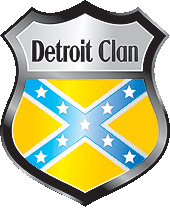Итак много раз уже все этот вопрос перетирали, а именно - какой лить бензин в наши машины, какой не лить, на каком экономия и.т.п
Я решил расставить точки над этим Итак приступим.
Да отмечу, что я это делаю для тех кто ещё задаётся вопросом, те кто упёрлись рожками, можете не читать:))
Итак:
Чтобы понять на каком бензине ездит ваше авто, мы открываем Ваш американский мануал, который идёт с вашим авто.
Если такового нет, ищем его в нете.
Открыв мануал смотрим раздел
FUEL что мы можем увидеть там?
А там мы можем увидеть циферки октанового числа топлива для вашей машины, мы можем посмотреть увидеть что то типо 91, закрыть
мануал, сказать
91 и ниипёт я точно знаю

Однако более внимательный читатель обратит внимание ещё на одну деталь, что рядом с циферкой есть буковки, варианта которых в природе может быть 3
А именно:
Research Octane Number (RON)
Motor Octane Number (MON)
Anti-Knock Index (AKI) or (R+M)/2.Что же эти буковки значат спросят некоторые

)
Отвечаю
(RON) - Лабораторный метод исследования
(MON) - Моторный метод исследования
(R+M)/2 - Лабораторный+Моторный разделить на 2Теперь когда мы открыли мануал и знаем что у нас написано там я расскажу вам что надо лить

Всё просто лейте 76

)))))))))))) шутка

))
Приведу пример на своём Додже
У меня написано
91 (R+M)/2Что мне лить? А всё просто:
открываем Википедию
http://en.wikipedia.org/wiki/Octane_rating и смотрм:
Research Octane Number (RON)
The most common type of octane rating worldwide is the Research Octane Number (RON). RON is determined by running the fuel in a test engine with a variable compression ratio under controlled conditions, and comparing the results with those for mixtures of iso-octane and n-heptane.
Motor Octane Number (MON)
There is another type of octane rating, called Motor Octane Number (MON), or the aviation lean octane rating, which is a better measure of how the fuel behaves when under load as it is done at 900rpm instead of the 600 rpm of the RON[2][3]. MON testing uses a similar test engine to that used in RON testing, but with a preheated fuel mixture, a higher engine speed, and variable ignition timing to further stress the fuel's knock resistance. Depending on the composition of the fuel, the MON of a modern gasoline will be about 8 to 10 points lower than the RON. Normally, fuel specifications require both a minimum RON and a minimum MON.[citation needed]
Anti-Knock Index (AKI)
In most countries, including all of those of Europe, and Australia, the "headline" octane rating shown on the pump is the RON - but in the United States, Canada, and some other countries,[which?] the headline number is the average of the RON and the MON, called the Anti-Knock Index (AKI). It may also sometimes be called the Road Octane Number (RdON), Pump Octane Number (PON), or (R+M)/2.Difference between RON and AKIBecause of the 8 to 10 point difference noted above, the octane rating shown in the United States is 4 to 5 points lower than the rating shown elsewhere in the world for the same fuel. For example, 87 AKI octane fuel, the "regular" gasoline in the US and Canada, is 91–92 RON in Europe. 93 AKI octane fuel, the "premium" gasoline, is 97-98 RON in Europe.
However most European pumps deliver 95 RON as "EuroSuper" or "EuroPremium" (equivalent to 90–91 AKI). In Germany, Great Britain and some other countries, 98 RON as "SuperPlus" (93-94 AKI) is available almost everywhere. Even 100 RON (95-96 AKI), is widely sold, and BP sell 102 RON, marketed as "BP Ultimate 102", at some very select few filling stations.Смотрим внимательно последний пункт
Difference between RON and AKIКак мы видим что мой
91 (R+M)/2 - это примерно
95 ЕВРО87 (R+M)/2 он же
(AKI) - это
91-92 ЕВРО93 (R+M)/2 он же
(AKI) - это
98 ЕВРОТак что братцы лить вам надо
92 - если только у вас в мануале
87 (R+M)/2Думаю на этом поставим точку в этом наболевшем вопросе







